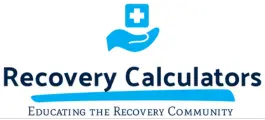Opiate withdrawal can be an intense and challenging experience, often requiring medical supervision to ensure safety and comfort. One of the essential tools used in this process is the Clinical Opiate Withdrawal Scale (COWS). This tool helps healthcare providers measure the severity of withdrawal symptoms in individuals detoxing from opiates. Using COWS, medical professionals can make informed decisions about the type and level of care required during detox.
What Is COWS and Why Is It Important?
The Clinical Opiate Withdrawal Scale is a tool that healthcare providers use to measure the severity of opiate withdrawal symptoms. This scale is particularly helpful in medical settings such as drug rehabs and detox programs. Opiate withdrawal can manifest various symptoms that may fluctuate in intensity, making it critical to have a systematic method for monitoring and managing these symptoms.
COWS is important because it allows healthcare providers to assess and respond to withdrawal symptoms in a standardized manner. The scale consists of 11 different criteria, each of which is rated on a scale from 0 (not present) to varying degrees of severity. These criteria include items such as sweating, tremors, gastrointestinal upset, and anxiety. The total score determines the severity of the withdrawal and the appropriate level of medical intervention required.
By using COWS, medical staff can ensure that patients undergoing opiate detox receive timely and appropriate care. The tool helps in making informed decisions about medication administration and other supportive measures necessary for a safe and effective detox process. This structured approach is particularly beneficial in settings like Scottsdale and Phoenix rehabs, where comprehensive care is essential for successful treatment outcomes.
Steps for Administering the COWS Assessment
Administering the COWS assessment involves a series of steps designed to accurately measure the severity of opiate withdrawal symptoms. Here is a breakdown of the essential steps:
- Preparation: Begin by ensuring you have a quiet, comfortable space for the assessment. Explain the procedure to the patient to reduce any anxiety.
- Observation: Observe the patient for signs of withdrawal symptoms such as yawning, sweating, and restlessness. This initial observation provides a baseline for the assessment.
- Symptom Review: Go through each of the 11 criteria on the COWS scale. These include pulse rate, pupil size, bone or joint aches, and other specific symptoms. Ask the patient about their experiences and rate each symptom based on the severity observed or reported.
- Scoring: Rate each symptom on a scale from 0 to varying degrees of severity (e.g., mild, moderate, severe). Add up the scores to get a total COWS score, which will determine the level of care needed.
- Documentation: Document the scores and any relevant observations. This documentation is crucial for tracking progress and making any necessary adjustments to the treatment plan.
- Intervention: Based on the total COWS score, decide on the appropriate interventions. A lower score may indicate a need for minimal intervention, while a higher score may require medication and close monitoring.
By following these steps, healthcare providers can effectively use the COWS assessment to manage opiate withdrawal symptoms. This structured approach ensures that patients receive the care they need to safely navigate the detox process. It’s a key component in drug rehabs, providing a reliable method for assessing and treating withdrawal, thus facilitating recovery from drugs.
Symptoms Tracked by COWS
COWS tracks a variety of symptoms associated with opiate withdrawal. Monitoring these symptoms helps healthcare providers determine the severity of withdrawal and adjust treatment plans accordingly. Here are some key symptoms tracked by COWS:
- Resting Pulse Rate: A higher pulse rate indicates an elevated level of distress, a common sign of withdrawal.
- Sweating: Sweating can occur even when the room temperature is normal. Profuse sweating is a notable withdrawal symptom.
- Restlessness: This includes the inability to stay still, constant movement, and agitation.
- Pupil Size: Dilated pupils are a common symptom and can be easily observed.
- Bone or Joint Aches: Patients may experience pain in their bones or joints, often described as aching or discomfort.
- Runny Nose or Tearing: Excessive nasal discharge or tearing from the eyes can indicate withdrawal.
- Gastrointestinal Issues: Nausea, vomiting, and diarrhea are common as the body reacts to the absence of opiates.
- Tremors: Involuntary shaking or tremors, especially in the hands, are often observed.
- Yawning: Frequent yawning is a less severe but common symptom.
- Anxiety or Irritability: Patients may feel anxious, irritable, or both.
- Gooseflesh Skin: Also known as “goosebumps,” this is a telltale sign of withdrawal.
By systematically tracking these symptoms, healthcare providers can ensure a comprehensive approach to managing opiate withdrawal. This is vital in settings like luxury rehabs and traditional drug rehabs, where personalized care enhances the likelihood of successful recovery.
Advantages of Using COWS in Opiate Detox Programs
Using COWS in detox programs offers several notable advantages. This tool is integral in ensuring a safe and effective detox process, which is crucial for long-term recovery from opiates, including drugs like fentanyl and prescription opioids.
- Accurate Monitoring: COWS provides a clear, standardized way to measure the severity of withdrawal symptoms. This helps in making precise and timely medical decisions.
- Individualized Care: The scale allows for tailored interventions based on the specific needs of the patient, enhancing the overall effectiveness of the treatment plan.
- Preventing Complications: By closely monitoring symptoms, healthcare providers can intervene early to prevent severe complications such as dehydration or extreme agitation.
- Improved Patient Comfort: The ability to assess and manage symptoms accurately helps in reducing patient discomfort, making the detox process more manageable.
- Enhanced Communication: COWS scores provide a common language for healthcare providers to discuss patient progress and make informed decisions collectively.
- Data Collection: The scores collected through COWS can help in evaluating the effectiveness of various treatment approaches and refining them for better outcomes.
These advantages make COWS an indispensable tool in both Scottsdale and Phoenix rehabs, where the focus is on comprehensive and compassionate care. By utilizing COWS effectively, we can improve the chances of a successful detox and pave the way for long-term recovery.
Conclusion
The Clinical Opiate Withdrawal Scale (COWS) is a critical tool in managing opiate withdrawal. It enables healthcare providers to monitor symptoms accurately and provide individualized care, ensuring a safer and more comfortable detox process. Tracking symptoms such as pulse rate, sweating, restlessness, and more allows for timely interventions that can prevent severe complications. The structured approach offered by COWS helps improve patient outcomes and supports the overall success of detox programs.
Using COWS in drug rehabs is essential for anyone undergoing opiate withdrawal. Whether in luxury rehab settings or traditional detox programs, the benefits of this tool are clear. By systematically monitoring symptoms, healthcare providers can enhance patient comfort and ensure effective treatment.
For more comprehensive information on medical calculators like COWS and tools for managing addiction recovery, visit Recovery Calculators. Our resources are designed to support the drug and alcohol addiction recovery community through education and effective tools.


